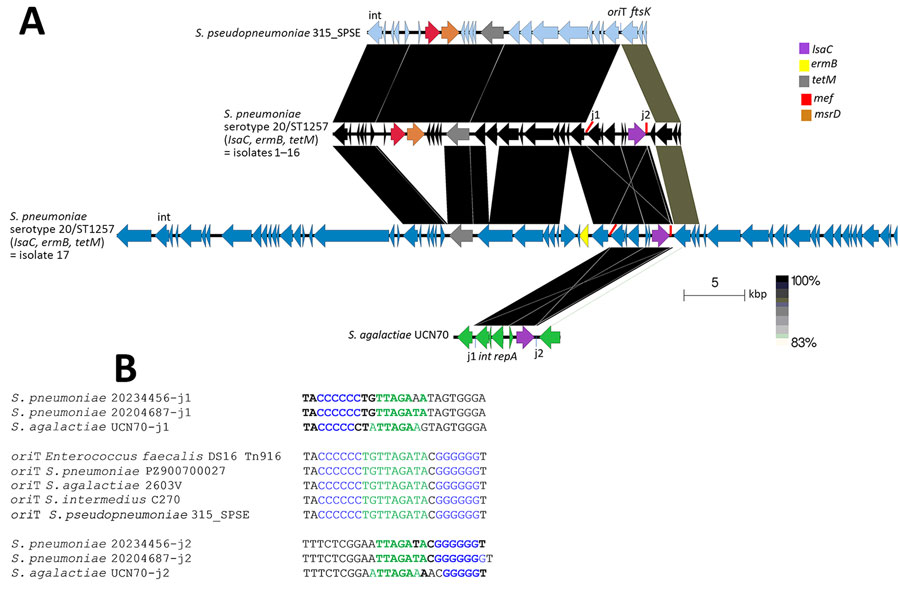Volume 31, Number 11—November 2025
Research
Two Independent Acquisitions of Multidrug Resistance Gene lsaC in Streptococcus pneumoniae Serotype 20 Multilocus Sequence Type 1257
Figure 7

Figure 7. Related regions shared between the 2 pneumococcal lsaC elements from this study, the mobile element found in S. pseudopneumoniae 315_SP_SPSE, and the partial mobile element from GBS strain UCN70 in study of 2 independent acquisitions of multidrug resistance gene lsaC in serotype 20/ST1257 S. pneumoniae, United States. A) The lsaC element target site (oriT) is indicated in S. pseudopneumoniae 315_SPSE, with partially homologous junctions (j1 and j2) of the lsaC elements in the 3 strains (isolate 1–16, isolate 17, and S. agalactiae UCN70). B) The identical oriT sequence shared between related mobile elements lacking lsaC from 5 different species is shown. lsaC element junction j1 shares homology with the 5' oriT sequence and junction j2 shares homology with the 3′ oriT sequence. Purple indicates the shared C and G repeats; green indicates direct repeats between each of the 3 strains shared between their specific j1 and j2 sequences and homologous central oriT sequence. Bold indicates J1 and j2 bases shared with the oriT sequence. ST, sequence type.